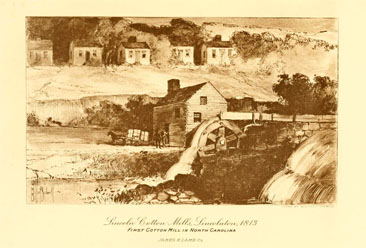
By the middle of the 1800s, the U.S. Census Bureau was asking more information about the people of each state and their economic production. Beginning in 1840, census takers asked people their occupations. The lists below show the occupations that free North Carolinians reported in the Census of 1860.
In the 1920s, historian Guion Griffis Johnson grouped North Carolinians’ occupations into several categories. She explains:
"Dairymen, nurserymen, and overseers have been placed in the farmer group; farm hands, day laborers, laundresses, servants, teamsters, apprentices, drivers, and those similarly employed have been placed in the laborer group; those who followed a craft, such as cooper, blacksmith, carpenter, have been classified as tradesmen; physicians, teachers, lawyers, engineers, public officials, and the like have been classified as professional workers; grocers, druggists, innkeepers, traders, bankers, and the like have been placed in the merchant group; clerks, bookkeepers, collectors, and those of similar employment have been classified as white-collar workers; and coachmakers, cabinet makers, harnessmakers, distillers, tobacco manufacturers, and establishments of a similar nature which seem to have been operated on more than an ordinary outlay of capital have been classified as manufacturers."
Note that very few people (only 121!) identified themselves as “planters.” Although we use the term today to refer to owners of large farms, even the largest farmers and slaveholders in the antebellum South typically referred to themselves modestly as “farmers” — just as, today, people who own thousands of acres of cropland tend to refer to themselves as “family farmers” rather than, say, “agribusinessmen.”
(Note: the following list is a short list of the main occupations listed in the 1860 Census. For a full list, click here for a PDF document.)
|
Categories of Occupations in North Carolina, 1860 (Short List) |
||
|---|---|---|
|
Occupation |
Number |
Percent |
|
Farmers
|
87,025
|
45.20
|
|
Laborers
|
63,481
|
32.94
|
|
Tradesmen
|
27,263
|
14.15
|
|
Professional workers
|
7,436
|
3.85
|
|
Merchants
|
3,479
|
1.80
|
|
White-collar workers
|
1,913
|
.99
|
|
Manufacturers
|
1,308
|
.70
|
|
Planters
|
121
|
.06
|
|
All Others
|
608
|
.31
|
|
Total
|
192,634
|
100.00
|